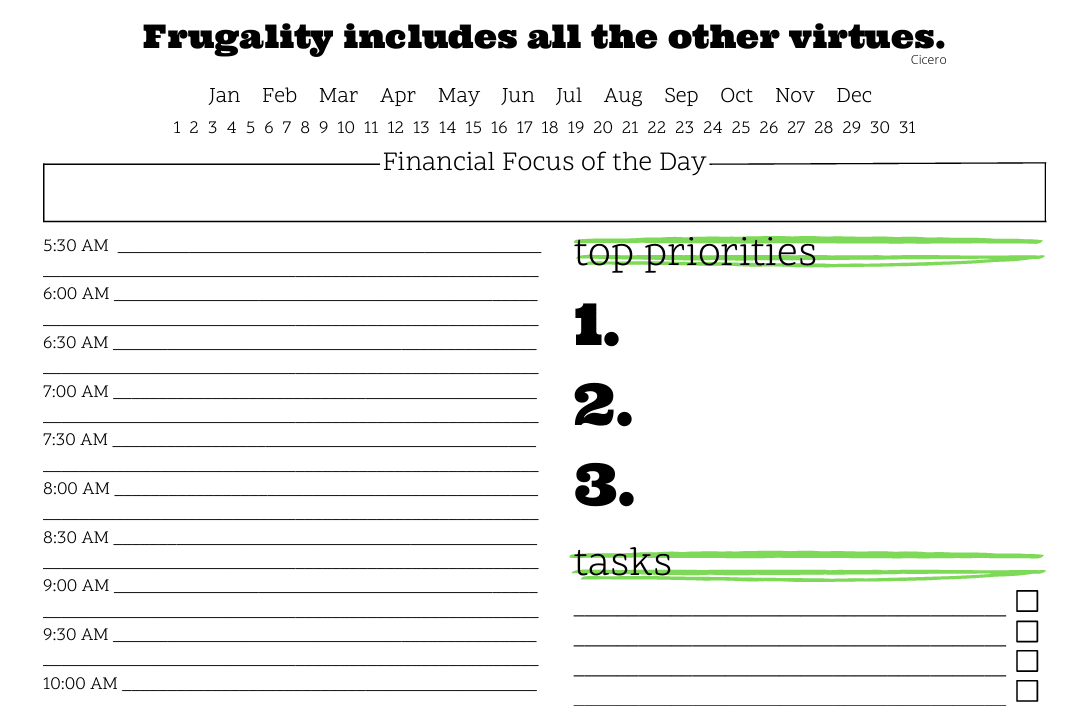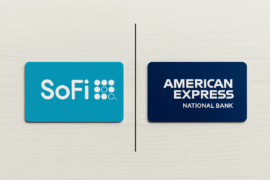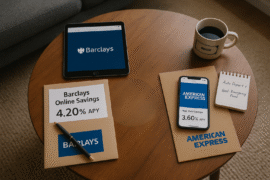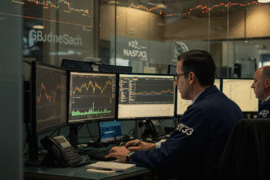This article may contain references to products or services from one or more of our advertisers or partners. We may receive compensation when you click on links to those products or services. Nonetheless, our opinions are our own.
The information presented in this article is accurate to the best of our knowledge at the time of publication. However, information is subject to change, and no guarantees are made about the continued accuracy or completeness of this content after its publication date.

Updated by Albert Fang
The right financial software can make a world of difference when it comes to improving your financial situation or getting your finances back on track after a rough patch. The average smart phone is capable of handling a wide range of investment applications, making it easy for people who are just starting out to get started in the stock market. Real-time snapshots of your portfolios, the ability to quickly trade stocks, and educational materials are good features to have in the best apps for learning about the stock market. These sorts of apps have become increasingly popular given their versatility and range of offerings to the average user, offering information and capabilities that were previously only in the hands of elite stockbrokers only a few years ago. But how do you know which app to use? Should you use M1 Finance vs Betterment or M1 Finance vs Public.com? If you’re thinking about getting into investing, take a look at these ideas.
Apps for Investing
Before you choose an investment service, you should make sure you fully understand all of the fees, procedures, investment options, and tax rules that come with it.
M1 Financial Services
For newbies in the financial industry, M1 Finance is an excellent place to get started in the industry. There are no commissions or account management fees for self-directed investors who use this robo-advisor. Investing and borrowing capabilities are built right into the app. In addition to allowing for margin investing, the dashboard provides investors with a comprehensive view of their finances. The bare minimum to open an account is $100. Lines of credit and fractional share trading are also available. On the other hand, it does not have human advisors and there is no tax loss harvesting.
Betterment
Betterment has become one of the most popular robo-advisors and investment applications out there, as it provides portfolios that are managed by professionals who use a selection of stocks and ETFs based on your indicated risk tolerance. A popular feature of Betterment is a customized socially responsible portfolio that focuses on the social impact or climate change of such investments, which has recently become a concern for millennial investors. It has a low account minimum and maintenance fees and allows for fractional share investing. It also offers fairly strong tools that allow investors to set goals. On the other hand, it does not allow direct indexing. Choosing between M1 Finance vs Betterment, for example, might come down to which investment options each offers that someone might prefer over the other.
Public.com
Public is a good service for active traders who want access to cryptocurrency as well as stocks and ETFs. For beginners who are unsure of where to start, the app has one of the strongest educational sections among its competitors, with numerous resources that include live events. There are no account minimums or maintenance fees, and investors can see how their peers are doing on social media and in the investor community, giving investing a new social flavor. Fractional shares can also be purchased. On the other hand, there are no investment research or analysis tools such as level two trading, and it has limited investment options. If you are trying to choose between M1 Finance vs Public.com, Public offers a certain social dimension to trading, similar to word-of-mouth, that is not present in its competitors.
Stash
Stash is yet another good place for beginners to start, with low fees ranging from $3 to $9 a month, dependent upon the type of account and to which services you subscribe. Although managed Smart Portfolios require a $5 deposit to open an account, there is no account minimum other than the monthly fee. Personal portfolios do not have strong automated management, however, so those looking for that type of service might want to look elsewhere. However, it does offer some automated and self-directed investment options, as well as the ability to invest in fractional shares and value-based investments. On the other hand, IRAs are not managed automatically, and Smart Portfolios do not offer tax loss harvesting. Choosing between services such as M1 Finance vs Stash usually comes down to the app features and user interface.
Paid non-client endorsement. See Apple App Store and Google Play reviews. View important disclosures.
Nothing in this material should be construed as an offer, recommendation, or solicitation to buy or sell any security. All investments are subject to risk and may lose value.
Stash has full authority to manage a “Smart Portfolio,” a discretionary managed account.
Acorns
Unlike some of the other apps reviewed here, Acorns acts as a savings tool and cashback reward program that automates investing from everyday spending. A new account is created and a number of other financial instruments, such as credit or debit cards, are linked. Acorns automatically rounds up purchases on these accounts to the nearest dollar, depositing the difference into the user’s Acorns account and investing it. This is a good feature for those who don’t have the inclination to deposit money into savings and investment accounts on a regular basis, with the automation of the process, and is useful for those who don’t have the time to do so. Investors can even get cash back at some retailers.
Summary
Investing doesn’t have to be a complicated process, and mobile apps have made it easier for the average person to get started. How much research, risk tolerance, initial investment, commissions, and monthly fees you’re willing to put in, as well as how much educational material you think you need, go into choosing the best investment application for you. As an investor, it is important to remember that many of these services do not help much with taxes, and every investor should take into account the paperwork that will be required when it comes time to file their taxes, and this can be negatively impacted by having multiple trading accounts open. Hopefully this short roundup has answered any questions you might have, such as choosing between M1 Finance vs Stash or M1 Finance vs Acorns app, or any other service reviewed here.
FAQ
1. Do the services report my investments to the IRS?
Yes, upon signing up for a new account, users must provide their social security number, employment information, and tax information, for which they receive the necessary forms each year for tax purposes.
2. Do I have to pay taxes if I invest in cryptocurrency?
Many investment applications are starting to offer cryptocurrency as an investment, and in years prior, it was not necessary to pay taxes on them. However, recent legislation at the state and federal level is now levying taxes on cryptocurrency earnings, so you will likely have to pay taxes on them. Be familiar with the laws in your area and plan accordingly.
3. Do I need a minimum credit score to sign up for the services?
Most investment applications do not pull your credit score, though it is best to have a credit score of at least 650 before engaging in investment.

Reviewed and edited by Albert Fang.
See a typo or want to suggest an edit/revision to the content? Use the contact us form to provide feedback.
At FangWallet, we value editorial integrity and open collaboration in curating quality content for readers to enjoy. Much appreciated for the assist.
Did you like our article and find it insightful? We encourage sharing the article link with family and friends to benefit as well - better yet, sharing on social media. Thank you for the support! 🍉
Article Title: M1 Finance vs Betterment vs Public.com vs Stash vs Acorns App: Which Investment App to Pick?
https://fangwallet.com/2022/06/17/m1-finance-vs-betterment-vs-public-com-vs-stash-vs-acorns-app-which-investment-app-to-pick/The FangWallet Promise
FangWallet is an editorially independent resource - founded on breaking down challenging financial concepts for anyone to understand since 2014. While we adhere to editorial integrity, note that this post may contain references to products from our partners.
The FangWallet promise is always to have your best interest in mind and be transparent and honest about the financial picture.
Become an Insider

Subscribe to get a free daily budget planner printable to help get your money on track!
Make passive money the right way. No spam.
Editorial Disclaimer: The editorial content on this page is not provided by any of the companies mentioned. The opinions expressed here are the author's alone.
The content of this website is for informational purposes only and does not represent investment advice, or an offer or solicitation to buy or sell any security, investment, or product. Investors are encouraged to do their own due diligence, and, if necessary, consult professional advising before making any investment decisions. Investing involves a high degree of risk, and financial losses may occur including the potential loss of principal.
Source Citation References:
+ Inspo












































